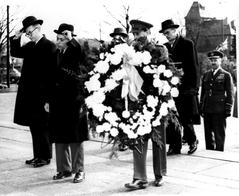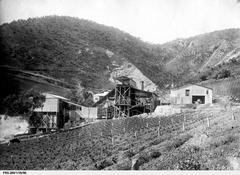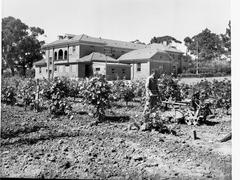
Discover Adelaide: Your Ultimate Guide to South Australia’s Hidden Gem
Date: 13/08/2024
Start with a Captivating Introduction
Welcome to Adelaide, the enchanting capital of South Australia, where history, culture, and natural beauty blend seamlessly to create an unforgettable experience. Imagine strolling through a city that is both a living museum and a vibrant festival hub, all while being surrounded by lush parklands. Adelaide, dubbed the “City of Churches,” has a rich tapestry of stories to tell, from its indigenous Kaurna roots to its modern-day cultural and economic significance. Did you know that Adelaide is the only major Australian city that wasn’t founded as a penal colony? Instead, it was settled by free British citizens in 1836, seeking religious freedom and economic opportunities (Wikipedia). The city’s unique grid layout, designed by Colonel William Light, is surrounded by 900 hectares of parklands, earning it the distinction of being the world’s only city within a park (Map of Australia). Whether you’re a history buff, a foodie, or an adventure seeker, Adelaide offers something for everyone. Get ready to dive into the heart of this city with insider tips, hidden gems, and a touch of local humor!
Table of Contents
- History of Adelaide
- Aboriginal Settlement
- European Settlement
- Planning and Design
- Early Colonial Period
- Economic Development
- Immigration and Cultural Diversity
- Progressive Reforms and Religious Freedom
- Industrial and Economic Growth
- Modern Adelaide
- Significant Historical Sites
- Cultural Institutions
- Festivals and Events
- Visitor Tips
- Significance of Adelaide
- A Whimsical Journey Through Adelaide: Discover Its Hidden Charms and Iconic Wonders
- Introduction
- Markets and Munchies: The Heart of Adelaide
- Nature’s Embrace: Gardens and Beaches
- Sport and Spectacle: Iconic Venues
- Hills and Vines: Scenic Escapes
- Wild Encounters: Animals and Adventure
- Shopping and Festivals: Vibrant Local Scene
- Beyond the City: Natural Wonders
- Museums and More: History and Heritage
- Hidden Gems and Insider Tips
- Call to Action
Discover the Essence of Adelaide
History of Adelaide
Aboriginal Settlement
Before European settlement, the area now known as Adelaide was inhabited by the Kaurna people, one of the many Aboriginal tribes in South Australia. The Kaurna referred to the Adelaide region as “Tarntanya” or “Tandanya,” meaning “the place of the red kangaroo” (Smithsonian Magazine). The Kaurna people had a rich cultural heritage and a deep connection to the land, which included a variety of social, spiritual, and economic practices.
European Settlement
Adelaide was founded in 1836 as the planned capital for the only freely-settled British province in Australia. Unlike other Australian cities such as Sydney and Melbourne, which were established as penal colonies, Adelaide was settled by free British citizens seeking religious freedom and economic opportunities (Wikipedia). The city was named in honor of Queen Adelaide, the consort of King William IV.
Planning and Design
Colonel William Light, one of Adelaide’s founding fathers, was responsible for designing the city center and choosing its location close to the River Torrens. Light’s design, known as “Light’s Vision,” featured a grid layout interspersed with wide boulevards and large public squares, all surrounded by parklands. This design is now listed as national heritage (Wikipedia).
Early Colonial Period
The early years of Adelaide were marked by economic uncertainty and leadership conflicts. The first governor of South Australia, John Hindmarsh, frequently clashed with Resident Commissioner James Hurtle Fisher. Despite these challenges, the rural area surrounding Adelaide was surveyed by Light in preparation for selling over 405 km² of land (Wikipedia).
Economic Development
Adelaide’s economy began to stabilize in 1838 with the arrival of livestock from Victoria, New South Wales, and Tasmania. Wool production became an early economic driver, and by 1860, wheat farms had been established from Encounter Bay in the south to Clare in the north (Wikipedia).
Immigration and Cultural Diversity
Initially, the settlers in Adelaide were primarily British or Irish. However, in the mid-19th century, many Germans settled in Adelaide and the surrounding areas. This influx of German immigrants contributed to the cultural diversity of the city and its surrounding regions (Local Histories).
Progressive Reforms and Religious Freedom
Adelaide became known for its progressive political reforms and religious freedom. The city earned the nickname “City of Churches” due to its diverse range of faiths and places of worship. This reputation for religious tolerance attracted various religious groups, including German Lutherans, who played a significant role in the city’s development (Wikipedia).
Industrial and Economic Growth
Adelaide’s industrial growth was notable in the automotive sector. The city was home to vehicle operations of Holden, Chrysler Australia, and Mitsubishi Motors Australia. Additionally, Adelaide hosted the first series of the Australian Grand Prix in the FIA Formula One World Championship from 1985 to 1995 (Wikipedia).
Modern Adelaide
Today, Adelaide is known for its festivals, sporting events, food and wine, coastline, and hills. The city is also a hub for the defense and manufacturing sectors and has an emerging space sector, with the Australian Space Agency headquartered there (Wikipedia).
Significant Historical Sites
The Old Gum Tree
The commencement of colonial government in South Australia was proclaimed on December 28, 1836, near The Old Gum Tree in what is now the suburb of Glenelg North. This event is commemorated annually as Proclamation Day (Wikipedia).
Adelaide Oval
For a blend of sporting heritage and modern-day excitement, the Adelaide Oval is a must-visit. Located in the heart of the River Torrens Precinct, the Oval offers sporting tours, a museum dedicated to Sir Donald Bradman, and RoofClimb experiences that provide unique views of the city (Cultural Attractions of Australia).
Cultural Institutions
Tandanya National Aboriginal Cultural Institute
One of the best ways to learn about Kaurna history is by visiting the Tandanya National Aboriginal Cultural Institute. This institute showcases the work of Aboriginal Australian artists and provides insights into the rich cultural heritage of the Kaurna people (Australia.com).
South Australian Museum
The South Australian Museum is another key cultural institution in Adelaide. It offers a range of exhibits that delve into the natural and cultural history of the region, making it a valuable resource for understanding Adelaide’s past (South Australia).
Festivals and Events
Adelaide is often referred to as the “Festival City” due to its numerous cultural events. Major festivals include Womadelaide, the Adelaide Festival, and the Adelaide Fringe. These events attract visitors from around the world and contribute to the city’s vibrant cultural scene (Cultural Attractions of Australia).
Visitor Tips
Best Time to Visit
The best time to visit Adelaide is during the spring (September to November) and autumn (March to May) when the weather is mild, and the city hosts numerous festivals. Winter (June to August) is ideal for whale watching and offers great bargains, while summer (December to February) is perfect for beach activities (Travel and Leisure Asia).
Getting Around
Adelaide is well-connected with both domestic and international flights. The city’s public transportation system includes buses, trains, and trams, making it easy to navigate. Additionally, Adelaide’s layout, with its wide boulevards and grid design, makes it a pedestrian-friendly city (Australia.com).
Accommodation
Adelaide offers a range of accommodation options, from luxury hotels to budget-friendly hostels. Popular areas to stay include the city center, North Adelaide, and the beachside suburb of Glenelg (South Australia).
Conclusion
Adelaide’s rich history, cultural diversity, and modern amenities make it a fascinating destination for tourists. Whether you’re interested in exploring its Aboriginal heritage, enjoying its festivals, or simply relaxing on its beautiful beaches, Adelaide has something to offer every visitor.
Significance of Adelaide
Discovering Adelaide’s Layers
Historical Significance
Adelaide, the capital city of South Australia, holds a unique place in Australian history. Originally called Tarntanya (red kangaroo place) by the Kaurna people, the land was home to this indigenous group long before European settlement. The Kaurna people, who lived in harmony with nature, managed the land and waterways of the region, creating a rich cultural heritage that is still celebrated today (Experience Adelaide).
The city was officially founded in 1836 by European free-settlers, making it the only freely settled British province in Australia. Colonel William Light, the surveyor, was tasked with designing the city layout. His vision resulted in a meticulously planned city with a unique grid pattern surrounded by 900 hectares of lush, green parks, known as the Park Lands (Map of Australia). This design has earned Adelaide the distinction of being the world’s only city within a park.
Cultural and Social Development
Adelaide’s cultural richness began to flourish in the 19th century with the establishment of institutions such as the South Australian Museum, which helped put the city on the world map as a center of culture and learning. The city’s first public library opened in 1845, paving the way for intellectual growth and exploration. Regular concerts, theatre performances, and art exhibitions became a staple of Adelaide’s vibrant cultural scene (Map of Australia).
The city is also known for its strong religious influence, earning it the nickname “city of churches.” This moniker reflects the numerous churches built by early settlers, which continue to be significant landmarks today (Chris and Laura Travels).
Economic Significance
Adelaide’s economy has evolved significantly over the years. Initially, the city earned the moniker “granary of Australia” due to its agricultural prosperity. However, the modern economy is diverse, with significant contributions from sectors such as defense technology, biomedical research, and information technology. The wine industry remains robust, with Adelaide being the wine capital of Australia, surrounded by six wine regions, the closest being just 15 minutes away in the rolling Adelaide Hills (Travel and Leisure Asia).
Tourist Attractions
Adelaide offers a plethora of attractions that cater to a wide range of interests. Here are some must-visit spots:
Adelaide Central Market
Located in the heart of the city, the Adelaide Central Market is one of the largest covered markets in the Southern Hemisphere. With over 70 traders, the market offers a vibrant display of fresh produce, baked goods, seafood, and more. It’s a must-visit for anyone looking to experience the local food scene (Chris and Laura Travels).
Adelaide Botanic Garden
Opened in 1857, the Adelaide Botanic Garden has been welcoming visitors for over 165 years. The garden features a variety of exhibitions, including the Amazon Waterlily Pavilion, the Palm House, and the Dahlia Garden. It’s an excellent spot for a leisurely stroll and offers a peaceful escape from the city’s hustle and bustle (Chris and Laura Travels).
Adelaide Oval
A visit to Adelaide wouldn’t be complete without a tour of the Adelaide Oval. This 19th-century icon is not just a cricket stadium but also a venue for football, rugby matches, concerts, and events. The “RoofClimb” tour offers adventurous visitors the chance to sit on rooftop stadium seats, 50 meters above the ground, and enjoy panoramic views of the city (Travel and Leisure Asia).
Glenelg Beach
For those looking to relax, Glenelg Beach is the perfect spot. Located just a short tram ride from the city center, the beach offers white sandy shores and a variety of dining options. It’s also a great place to watch the sunset, providing a picturesque end to any day (Travelling King).
Introduction
Welcome to Adelaide, the charming capital of South Australia! Picture a city that blends vibrant culture, tantalizing cuisine, and stunning natural beauty. Now, imagine exploring this gem with the insider tips and humor of a local friend. Buckle up as we embark on a whimsical journey through Adelaide’s top attractions and best-kept secrets.
Markets and Munchies: The Heart of Adelaide
Adelaide Central Market
Step into the bustling Adelaide Central Market, a sensory feast since 1869. Hear the lively chatter of traders, smell the aroma of fresh produce, and taste gourmet delights from over 70 stalls. From artisan cheeses to delectable pastries, this market is a food lover’s paradise. Pro tip: visit early on a Saturday to catch the best deals and freshest finds. (Adelaide Central Market)
North Terrace
Walk down North Terrace, Adelaide’s cultural spine, where history and art come alive. Discover the treasures of the South Australian Museum and the Art Gallery of South Australia. Feel the intellectual vibe of the State Library and the University of Adelaide. Each step here whispers stories of the city’s rich heritage. (North Terrace)
Nature’s Embrace: Gardens and Beaches
Adelaide Botanic Garden
Escape to the serene Adelaide Botanic Garden, a green oasis in the city’s heart. Wander through the Bicentennial Conservatory, marvel at the Palm House, and explore the medicinal plant garden. The Santos Museum of Economic Botany offers a fascinating glimpse into the plant-human relationship. (Adelaide Botanic Garden)
Glenelg Beach
Feel the sun on your face and the sand between your toes at Glenelg Beach. Ride the historic tram, stroll along Jetty Road, or dive into the Beachouse amusement park. Don’t miss the dolphin-watching cruises! Glenelg is the epitome of seaside fun and relaxation. (Glenelg Beach)
Sport and Spectacle: Iconic Venues
Adelaide Oval
Cricket fan or not, Adelaide Oval’s charm is undeniable. Take a guided tour, enjoy panoramic views from the roof climb, and soak in the history at the adjacent Riverbank Precinct. It’s more than a stadium; it’s a cultural icon. (Adelaide Oval)
Hills and Vines: Scenic Escapes
Adelaide Hills
Just a short drive away, the Adelaide Hills offer picturesque landscapes and charming villages. Visit Hahndorf, Australia’s oldest German settlement, and explore the cool-climate plants at Mount Lofty Botanic Garden. Don’t forget a visit to Cleland Wildlife Park to meet kangaroos and koalas up close. (Adelaide Hills)
Barossa Valley
Wine lovers, rejoice! The Barossa Valley, an hour from Adelaide, is renowned for its Shiraz. Tour world-class wineries, enjoy gourmet food, and explore charming towns like Tanunda and Angaston. Attend a festival to experience the region’s rich food and wine culture. (Barossa Valley)
Wild Encounters: Animals and Adventure
Adelaide Zoo
Home to over 2,500 animals, Adelaide Zoo is a haven for wildlife enthusiasts. Don’t miss the Giant Panda exhibit, the only one in the Southern Hemisphere. Interactive experiences make it a fun and educational outing. (Adelaide Zoo)
Tandanya National Aboriginal Cultural Institute
Dive into the rich heritage of Aboriginal and Torres Strait Islander culture at Tandanya. Enjoy art exhibitions, performances, and workshops. It’s a unique cultural experience that offers deep insights into Indigenous Australian life. (Tandanya)
Shopping and Festivals: Vibrant Local Scene
Rundle Mall
Shop till you drop at Rundle Mall, Adelaide’s premier shopping destination. With over 700 stores, street performers, and public artworks, it’s a lively spot for retail therapy and entertainment. (Rundle Mall)
Adelaide Fringe Festival
Held every February and March, the Adelaide Fringe Festival is the largest open-access arts festival in the Southern Hemisphere. Enjoy thousands of performances across theatre, comedy, music, and visual arts. The city comes alive with creativity and fun. (Adelaide Fringe Festival)
WOMADelaide
Celebrate cultural diversity at WOMADelaide, an annual world music, arts, and dance festival in Botanic Park. Enjoy performances, workshops, and family-friendly activities. It’s a vibrant festival that promotes environmental sustainability. (WOMADelaide)
Beyond the City: Natural Wonders
Flinders Ranges
Venture to the Flinders Ranges for rugged mountains, gorges, and ancient rock formations. Discover Aboriginal heritage, hike scenic trails, and camp under the stars. Wilpena Pound offers breathtaking views and numerous walking trails. (Flinders Ranges)
Adelaide Park Lands
Surrounding the city center, the Adelaide Park Lands offer green spaces for relaxation and recreation. Visit Elder Park for events and concerts, or enjoy walking and cycling in River Torrens Linear Park. It’s a haven for families and outdoor enthusiasts. (Adelaide Park Lands)
Museums and More: History and Heritage
Migration Museum
Explore the history of immigration to South Australia at the Migration Museum. Learn about the diverse cultures and communities that have shaped the state through exhibitions and interactive displays. (Migration Museum)
South Australian Maritime Museum
Delve into maritime history at the South Australian Maritime Museum in Port Adelaide. Explore historic vessels, maritime artifacts, and interactive exhibits. The Port Adelaide Lighthouse offers a glimpse into the region’s naval past. (South Australian Maritime Museum)
Haigh’s Chocolates Visitor Centre
Indulge your sweet tooth at Haigh’s Chocolates, Australia’s oldest family-owned chocolate maker. Take a guided tour to learn about the chocolate-making process and sample delicious treats. (Haigh’s Chocolates)
Adelaide Festival Centre
As Adelaide’s premier arts venue, the Adelaide Festival Centre hosts a variety of performances, including theatre, dance, music, and opera. It’s also the hub for the annual Adelaide Festival, attracting artists and audiences worldwide. (Adelaide Festival Centre)
Hidden Gems and Insider Tips
Cleland Wildlife Park
Get up close with native Australian animals at Cleland Wildlife Park. Hand-feed kangaroos, emus, and wallabies, and enjoy encounters with koalas. The park’s walking trails and picnic areas make it perfect for family outings. (Cleland Wildlife Park)
Mount Lofty Summit
Reach new heights at Mount Lofty Summit, offering panoramic views of Adelaide. Accessible by car or hiking trails, the summit features a café and gift shop, making it a great spot for picnics and photography. (Mount Lofty Summit)
Call to Action
Ready to uncover Adelaide’s secrets? Download Audiala, your ultimate audio guide companion! With expertly crafted guides, hidden gems, and local insights, Audiala enhances your exploration experience. Get ready to immerse yourself in Adelaide’s stories and start your adventure today. (Audiala)
By exploring these top attractions and hidden gems, you’ll experience Adelaide’s rich cultural heritage, natural beauty, and vibrant local scene. Whether you’re into history, art, food, or outdoor activities, Adelaide has something for everyone.
Enticing Call to Action
As we wrap up our whimsical journey through Adelaide, it’s clear that this city is more than just a destination—it’s an experience. From the bustling Adelaide Central Market to the serene Adelaide Botanic Garden, the city offers a sensory feast that engages all five senses. Adelaide’s rich history, from its Aboriginal roots to its European settlement, provides a fascinating backdrop to its modern-day cultural and economic vibrancy (Smithsonian Magazine). The city’s numerous festivals, such as the Adelaide Fringe and WOMADelaide, transform it into a hub of creativity and fun, attracting visitors from around the world (Cultural Attractions of Australia). Whether you’re exploring its iconic venues like Adelaide Oval or discovering hidden gems like Cleland Wildlife Park, Adelaide promises a journey filled with surprises and delights. Ready to uncover more of Adelaide’s secrets? Download Audiala, your ultimate audio guide companion, and let it enhance your exploration with expertly crafted guides and local insights. Your adventure in Adelaide awaits!
References
- Smithsonian Magazine, 2017, Snapshot of Adelaide, South Australia
- Wikipedia, 2023, Adelaide
- Map of Australia, 2023, History of Adelaide
- Cultural Attractions of Australia, 2023, Adelaide













